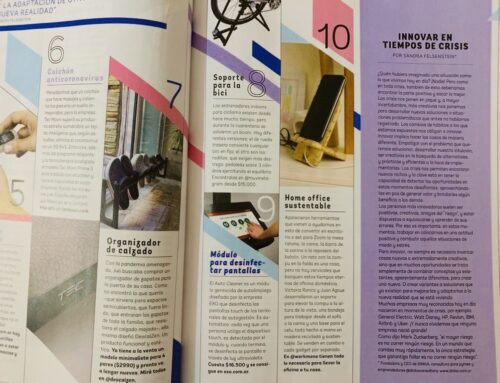When considering the idea of innovating in the company, the first thing we think about is that this process will require a large investment. But this does not have to be like this. You can innovate without having a lot of budget to achieve it. Sometimes, it is simply a matter of applying creativity to find new solutions to existing problems, in many cases combining apparently antagonistic or dissimilar concepts, to create new solutions.
“Never walk along the established path because it will only lead you to where others have already gone.” This famous phrase by Alexander Graham Bell speaks of nothing other than the importance of innovating. A concept so fashionable in these times, it was already the driving force and leitmotiv of important researchers, scientists, thinkers and inventors of past centuries. But what is innovation? Small and medium-sized companies often have the mistaken idea that to innovate, in addition to having to allocate large economic resources, they must have a Research and Development Department. And it's not like that.
The reality is that if we do not innovate, whatever the size of the company, we will lose the possibility of staying within a highly competitive and dynamic market, which requires being updated and up to date with the trends and needs that arise. For this reason, at DINKA (consultant for SMEs) we maintain that this should be on the agenda of every SME entrepreneur. This can undoubtedly be done with existing resources, properly refocused on the changes to be achieved. It is very common to think that innovation must necessarily involve innovating the final product or service that is offered. However, innovation consists of applying creativity in search of a better solution. One possibility could be to generate value to our offer, either through a benefit in our product or service, in the user experience, for example by improving the delivery or after-sales service. It is about how to give greater added value to what we offer, differentiated attention that results in the loyalty of our customers. Another example could be streamlining the company's structure and work processes to changing needs, improving its results and allowing it to gain competitiveness in the market.
Without a doubt, the use of digital tools constitutes a crucial element in innovation, regardless of the size of the company. Digital transformation usually brings countless benefits to companies. In any case, at DINKA we also tend to highlight the utmost importance in forming heterogeneous work teams to achieve a successful innovation process. It must be taken into account that a work group is made up of individuals with different interests, values, ideas and ways of communicating and also with different rhythms. These differences, which in other times could be perceived as possible generators of personal exhaustion, demotivation, low performance or high dropout, are currently interpreted as precisely the opposite. These differences must be taken advantage of in pursuit of successful performance, since they are what motivate the generation of new ideas and proposals; In other words, they promote creativity.
It is essential that the people in our teams are open to change and that we promote practices in the organizational culture that drive innovation. There are always ways to do better what we do today, we know that we will achieve it by working hard, that is, by monitoring the competition, knowing the desires and needs of our consumers, observing environmental and governmental forces in detail. To optimize these results, it would be desirable to have (or generate) adequate spaces to encourage the creativity of company employees and allow them to actively participate in innovation tasks. It is a mistake to think that innovative management depends exclusively on strategic lines or its technical or economic resources.
On the other hand, when we face an innovation process with our clients, at DINKA we encourage the assignment of change agents. These are people who oversee, promote and motivate organizational changes, facilitating the path towards this transformation and accompanying the team in moments of possible instability or insecurity that could be generated during the process.
In conclusion, nowadays companies should not ask themselves whether to innovate or not, that is already imperative in the environment in which we find ourselves. The correct question would be: what can we do to better manage innovation and allow the sustainable growth of companies, without the need to allocate significant investments for this purpose.








